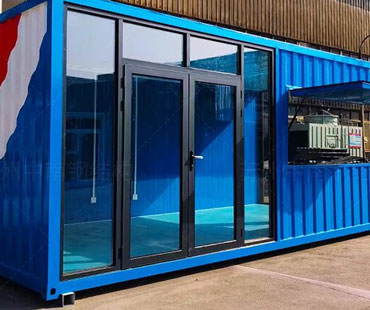Container ports serve as the critical nodes in the global supply chain, facilitating the movement of goods across vast distances. As globalization continues to shape trade dynamics, these ports are facing unprecedented challenges while simultaneously presenting new opportunities for growth and innovation. This article explores the multifaceted pressures brought by globalization on container ports and examines how they can adapt and thrive in this evolving landscape.
Globalization has significantly transformed the logistics and shipping industries, leading to increased demand for containerized freight. The growth of e-commerce, the rise of emerging markets, and the expansion of multinational corporations have all contributed to a surge in container traffic. However, this rapid increase also brings several challenges:
1.Infrastructure Strain: Many ports were not designed to handle the current volume of container traffic. Aging infrastructure, inadequate facilities, and limited space create bottlenecks, leading to delays and increased operational costs. Ports must invest in modernization and expansion to accommodate larger vessels and higher throughput.
2.Environmental Concerns: The surge in shipping activity has raised significant environmental issues, including air and water pollution. Ports are under pressure to adopt greener practices, reduce emissions, and comply with stricter regulations. Balancing economic growth with environmental sustainability is a critical challenge for port authorities.
3.Technological Advancements: The rapid pace of technological change presents both a challenge and an opportunity. Ports must integrate new technologies, such as automation, IoT (Internet of Things), and data analytics, to enhance efficiency and competitiveness. However, the initial investment and the need for skilled labor can be daunting.
4.Geopolitical Factors: Global trade is increasingly influenced by geopolitical tensions, trade wars, and regulatory changes. Container ports must navigate these complexities, adapting to shifting trade routes and changing import/export regulations. This uncertainty can impact cargo volumes and operational planning.

Despite these challenges, container ports have a unique opportunity to evolve and capitalize on the trends generated by globalization:
1.Investment in Infrastructure: Ports that proactively invest in infrastructure can enhance their capacity and efficiency. Developing deep-water berths, expanding terminal facilities, and improving transportation links can position ports as leaders in global trade. Public-private partnerships can provide the necessary funding for these ambitious projects.
2.Sustainability Initiatives: Embracing sustainability can enhance a port's reputation and attract environmentally conscious shipping companies. Implementing green technologies, such as shore power systems, waste management solutions, and renewable energy sources, can reduce the environmental footprint of port operations.
3.Technological Integration: Leveraging technology can streamline operations and improve service delivery. Automated cranes, real-time tracking systems, and data analytics can optimize cargo handling and logistics, reducing turnaround times and costs. Investing in cybersecurity is also essential to protect port operations from increasing digital threats.
4.Diversification of Services: Ports can diversify their services to include value-added activities such as warehousing, assembly, and distribution. By becoming logistics hubs rather than just transit points, ports can enhance their competitiveness and create new revenue streams.
5.Collaboration and Partnerships: Collaborating with stakeholders, including shipping lines, logistics providers, and local communities, can foster innovation and improve operational efficiency. Engaging in dialogue with these groups can also help ports respond more effectively to the needs of the market.
The challenges faced by container ports in the era of globalization are significant but not insurmountable. By recognizing the pressures of increased traffic, environmental concerns, technological advancements, and geopolitical factors, ports can strategically position themselves for future success. Through investment in infrastructure, commitment to sustainability, technological integration, service diversification, and collaborative approaches, container ports can transform these challenges into opportunities for growth and innovation. As the global trade landscape continues to evolve, those ports that adapt and innovate will be best positioned to thrive in a competitive, interconnected world.


